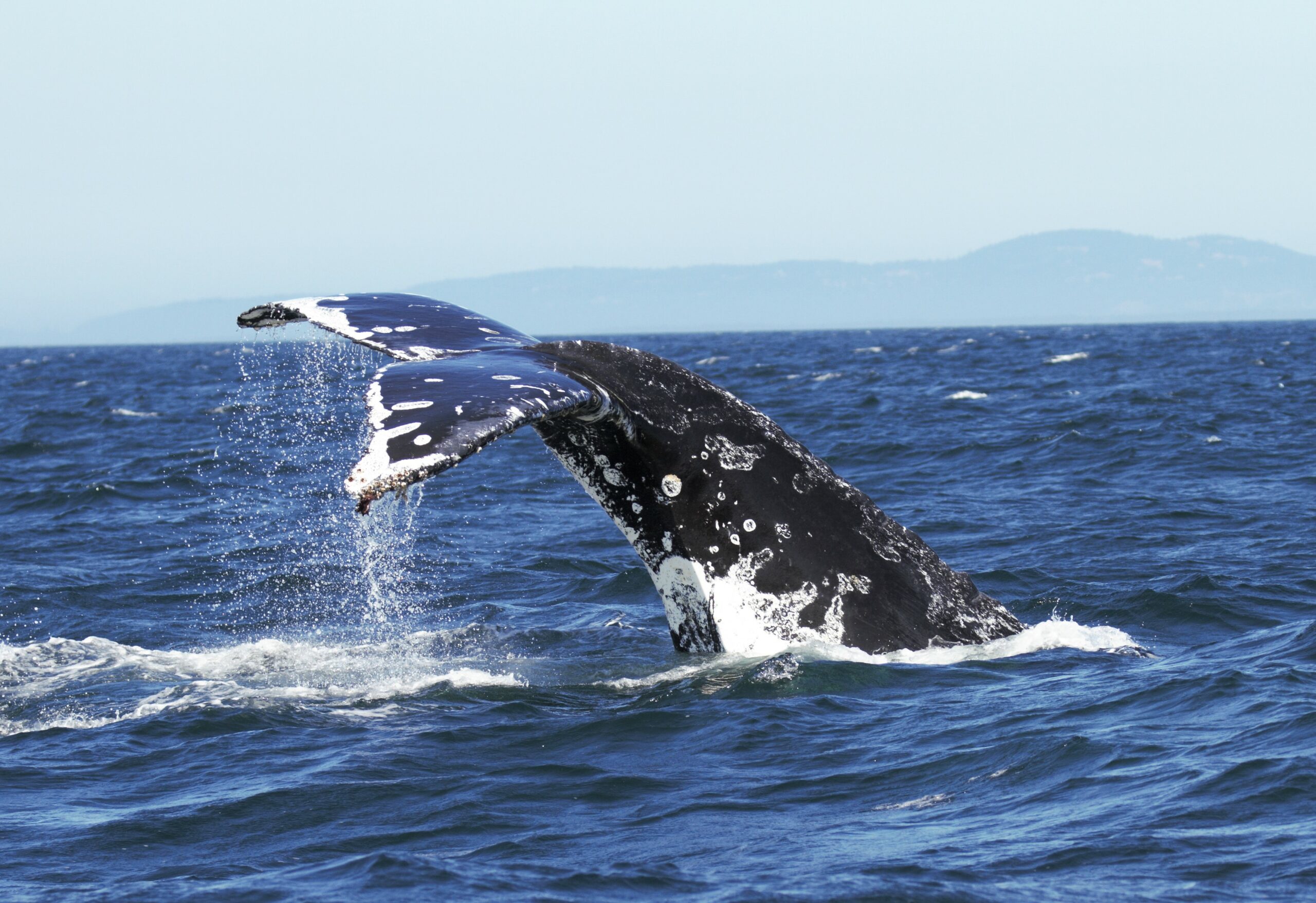Whale Vocalizations
The ocean is, for the most part, a dark and empty place. Even in pristine conditions, sunlight only penetrates up to 100m depth. Below that, at night and in turbid (cloudy) water, visual awareness has very limited use. Many marine mammals have excellent eyesight, but much more important is their sense of hearing. Sound travels further and faster in water than it does in air, which makes it a very useful way to collect information. Imagine being a blue whale in the middle of the Pacific Ocean: the nearest whale of your own kind is likely hundreds of miles away, so you can’t see each other. You dive down to 400 meters, and the water around you is pitch black. How do you find food? How do you find a mate, or know if a predator is sneaking up behind you? Or maybe you’re a killer whale, living in coastal waters that are cloudy and full of algae. Your pod-mates are 20 feet away, but you can’t see them through the murk. How do you keep from bumping into obstacles? If you find food, how do you let your family know where it is?
As visual animals, human beings take in most information from our surroundings through our eyes. Marine mammals, especially cetaceans like whales and dolphins, take in most information through their ears. Toothed whales like killer whales, dolphins and porpoises use echolocation, a type of biological sonar, much like bats use to see in the dark. They can ‘see’ their surroundings using sound, which allows them to keep track of each other, find food, and navigate in dark water. Echolocation clicks are high-pitched and very close together, and we hear it as a sound like a door creaking open. Some species, like harbour porpoises, produce echolocation clicks that are partially ultrasonic (too high-pitched for the human ear to perceive). On the other end of the size spectrum, larger whales like blue, fin and Sei whales produce lower-pitched sounds to communicate, some of which dip into the subsonic range (too low-pitched for our ears). This is partially because lower-frequency sound travels farther than high-pitched sound. Some whale calls have been known to travel thousands of miles across oceans! For whales that spread themselves out over great distances to feed, this is a great way to find potential mates. Some whales produce beautiful sounds, like the song of a humpback whale. Some whales produce truly bizarre vocalizations, like the minke whale’s ‘boing’.
Each species of whale and dolphin produces a different suite of vocalizations (called their ‘vocal repertoire’). Using this knowledge, scientists can use sound to study whales. By placing a hydrophone (underwater microphone) out in the ocean and listening to which whale sounds are heard and when, we can track certain species on their migrations and find out where and when they breed, feed and socialize. Some species have different vocalizations depending on where they’re found in the world. Humpback whales in Antarctica have different vocalizations from humpbacks in Alaska. Transient (mammal-eating) killer whales in BC have different vocalizations from resident (fish-eating) killer whales, and both types have different vocalizations from killer whales in the Atlantic Ocean or Alaska! This tells us that whales are not born knowing how to vocalize: they learn how to ‘speak’ from their parents, and pass their language down through generations just like humans do.
Because whales rely so heavily on their sense of hearing, any disruption of their ability to hear can be a potential threat to their survival. Human-caused noise from shipping, construction, oil exploration and navy sonar are all very loud, and becoming more and more prevalent in our oceans. Whales respond to noise in different ways: they can get used to it, simply calling louder or more often to be heard over the noise. Some species vocalize less and resort to non-vocal communication, like breaching and tail- slapping. Some species choose quieter places to live, giving up their favourite hunting or resting grounds.
That is why, when we are watching whales, we are very aware of the amount of engine noise that we are putting into the water. We stay at least 100m distance from the whales, and maintain a low speed to reduce noise. When possible, we switch off our motors entirely to reduce some of the ambient noise that the whales are exposed to. If we try our best to keep things quiet, we can sometimes even lower our own hydrophone and listen to the whales chatting away under us! It’s quite the experience.
__
Kat Nikolich, MSc
Onboard Naturalist/Biologist for SpringTide Whale Watching & Eco Tours

